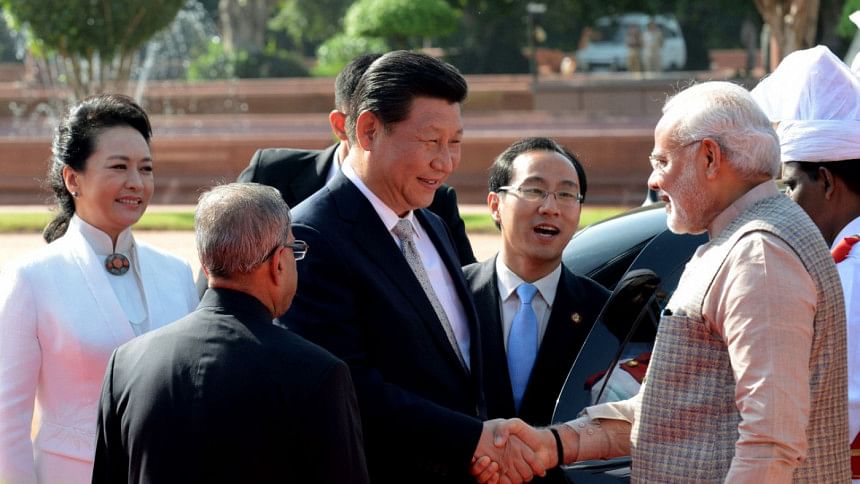Will strategic differences be removed?

INDIAN Prime Minister Narendra Modi arrived in China on a three-day visit from May 14. He was given a rousing reception by Chinese authorities. Instead of receiving Modi in Beijing, Chinese President Xi Jinping received him in Xian, capital of Xi's home province of Shaanxi. His welcome of Modi is similar to the gesture made by Modi to President Xi last September in Gujrat, his home state and not in New Delhi.
The visit is significant in many ways. First, he laid emphasis on economic relations with China because he believes that bilateral economic relations may promote in turn friendly political relations over time removing the distrust among the two economic giants in Asia. Second, India can be a global power if economic invigoration is injected through building infrastructure on roads, highways and railways and he is eager to follow the Chinese model of progress. Third, while he seeks Chinese investment and tourists in India, he cannot compromise India's increasing role in the Asia Pacific region because at a subterranean level both countries are considered as rivals. Moreover India's closer strategic partnership with the US is not comfortable to China.
Modi reportedly was an admirer of China when he was Chief Minister of Gujarat and as Prime Minister he was pleased to visit China in the first year of his Government. He reportedly said that both countries have a historic responsibility to turn this relationship into a source of strength for each other.
Modi and Chinese President Xi Jinping reportedly discussed all bilateral issues including the border issue, a major irritant. Prime Minister Narendra Modi said on May 15 that he had constructive and friendly talks with the Chinese leadership and both sides agreed to explore a fair, reasonable and mutually acceptable resolution on the boundary issue.
Modi reportedly raised India's concern over China's plans for infrastructure projects in Pakistan occupied Kashmir in a "free and candid exchange of views" and also voiced India's objections to China issuing stapled visas for residents of Arunachal Pradesh.
In discussions with his Chinese counterpart Li Keqiang, Modi reportedly stressed the need for China "to reconsider its approach on some of the issues that hold us back from realising full potential of our partnership". At the same time, he was pragmatic enough to conclude 24 agreements with China on trade and economic co-operation worth over $22 billion dollars in Beijing.
During Xi's visit to India last year, China announced $20 billion in investments over five years, including setting up two industrial parks. Since then progress has been slow, in part because of the difficulties Modi has had in getting political approval for easier land acquisition laws. Only a fifth of the necessary land has been acquired for a $5 billion industrial park in the western city of Pune.
A notice on China's national railway bureau website last month said a delegation visited India from April 25-29 at the invitation of India to talk about accelerating the Sino-Indian railway cooperation document.
China, which is conducting a feasibility study into a $36 billion bullet train project from the capital in the north to Chennai in the south, has asked for work to begin on a pilot project covering part of the route. It is reported that the two sides have also agreed to speed up implementation of a shorter high-speed rail corridor from Chennai to Bengaluru, as China seeks to cash in on Modi's vision of modernising the train system that 25 million people use daily. India is seeking investment of $137 billion on railway sector over the next five years.
Modi has been keen to reduce the huge deficit with China. Last year the bilateral trade amounted to $70.6 billion, and India had a deficit of $37 billion. For China and India, with a combined population of 2.5 billion people, the bilateral is meager. Modi sought to reduce the deficit in exporting to China in such areas where India has been very successful such as pharmaceuticals, information technology (software) and some agricultural products. Bilateral trade could rise easily to $200 billion per year.
Indian foreign policy analyst C. Raja Mohan said that Modi is "abandoning the old approach to China." Given the fact that the potential for competition and conflict is likely to persist, the challenge for Modi is how far he would be successful in bridging the strategic differences between the two countries.
The writer is former Bangladesh Ambassador to the UN, Geneva.

 For all latest news, follow The Daily Star's Google News channel.
For all latest news, follow The Daily Star's Google News channel. 



Comments